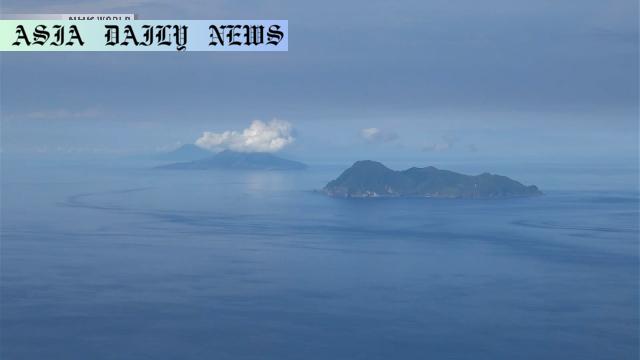Seismic Activity: Two islands in Japan shifted nearly 10 cm apart within a span of three days, attributed to tectonic and crustal movements.

Understanding the Seismic Activity in Southwestern Japan
Recent data from the Tokara island chain in Kagoshima Prefecture, Japan, has revealed an unusual phenomenon where two islands, Kodakarajima and Takarajima, shifted nearly 10 centimeters apart in just three days. This movement was recorded using advanced techniques involving observation points of the Geospatial Information Authority of Japan and mobile phone base stations. The islands, which had been previously moving northeast together, suddenly diverged in directions—Kodakarajima shifting 6 centimeters north-northwest and Takarajima moving 3.5 centimeters south.
Unraveling the Causes Behind the Phenomenon
Professor Ohta Yusaku of Tohoku University speculates that this crustal movement may not be directly linked to a recent magnitude 5.6 earthquake on July 2. The minor magnitude and the distance from the earthquake’s epicenter suggest alternative explanations. One possibility is the infiltration of magma into the Earth’s crust, which could have led to stress or deformation. Another potential cause could be a slow slip event—a gradual movement along a fault line near the continental plate.
Implications and Concerns About Future Seismic Activity
Although the immediate impact of this phenomenon is unclear, its unpredictability has sparked concern among experts. As similar shifts have not been documented before, researchers, including Professor Ohta, are delving into historical seismic data to find patterns. There are ongoing investigations into whether this unusual activity can signal a larger, potentially catastrophic event like a major earthquake. Experts emphasize the importance of monitoring the area closely and studying these movements for early warnings of seismic hazards.
Advances in Monitoring and Research
This occurrence highlights the critical role of technology in geophysical studies. By employing high-precision tools and real-time observation points, researchers can now detect minute changes in the Earth’s crust that might go unnoticed otherwise. The integration of scientific expertise and technological innovation is vital in understanding complex tectonic activities and mitigating risks for regions prone to natural disasters.
Conclusion
The movement of Kodakarajima and Takarajima serves as a stark reminder of the dynamic nature of our planet. While advances in technology have empowered scientists to monitor and analyze such events, the unpredictability of seismic phenomena requires continuous vigilance. Ensuring public safety and infrastructure resilience remains critical in regions susceptible to tectonic shifts. Ongoing research into these movements will not only shed light on the mechanisms but also help refine predictive models for earthquakes and other geophysical events.
Commentary
The Intriguing Shift of Japan’s Islands
The recent revelation of two islands in southwestern Japan moving nearly 10 centimeters apart is both fascinating and, in some ways, unsettling. It draws attention to the ever-changing nature of Earth’s geology and underscores the need for continuous vigilance and scientific exploration. For many, the idea of landmasses physically moving within such a short timeframe might seem like science fiction, yet here it is, a real-world phenomenon that demands attention.
Understanding Crustal Activity on a Deeper Level
Certainly, the significance of this event lies in its uniqueness. Movements of this nature and magnitude are incredibly rare, and as Professor Ohta indicated, have never been observed before in this area. The hypotheses surrounding the infiltration of magma or a slow fault slip further amplify the complexity of the Earth’s internal mechanisms. These shifts showcase how much remains to be understood about crustal dynamics, even in an age of significant technological advancements.
Broader Implications for Seismic Research
What stands out most is the potential implication of this event in forecasting future earthquakes. While there is no indication yet that these shifts might lead to a larger seismic occurrence, it raises questions about the accuracy of existing predictive models. This highlights the importance of continuous research and data collection. Equipped with historical patterns and modern monitoring tools, researchers have an opportunity to improve their ability to predict and respond to seismic threats.
On the Importance of Preparedness
Finally, this event should serve as a reminder for residents in Japan and similar regions to remain prepared for potential natural disasters. Regardless of whether or not this specific movement indicates an impending earthquake, the lessons it provides will undoubtedly enhance seismic awareness and safety protocols in the future. The key is to approach such phenomena with a mixture of curiosity, caution, and a commitment to proactive preparedness.


